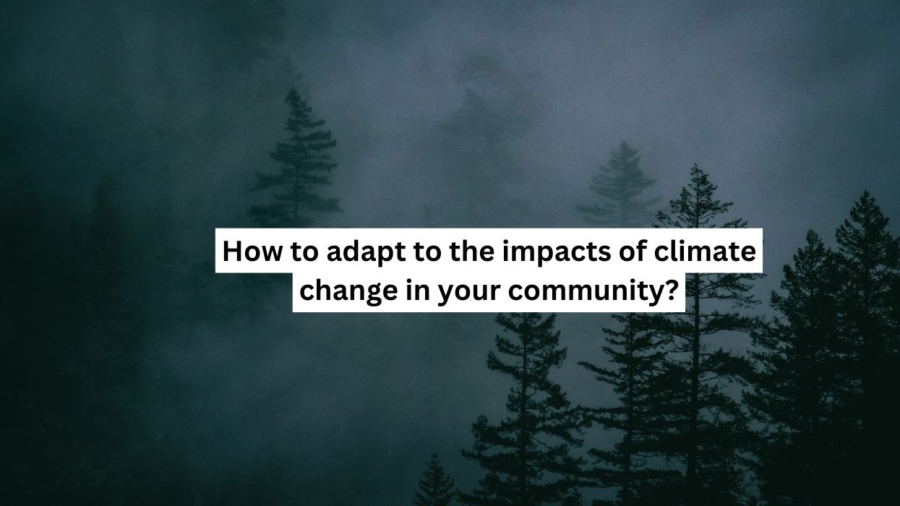Climate change is no longer a distant threat; its impacts are being felt worldwide, from rising temperatures and extreme weather events to shifting ecosystems and sea level rise. Adapting to these changes is essential to safeguard communities and build resilience against future challenges. While global action to mitigate climate change remains critical, local adaptations can make a profound difference in protecting lives, infrastructure, and ecosystems. Here’s how communities can prepare and adapt to the impacts of climate change effectively.
1. Assess Climate Risks and Vulnerabilities
Understanding the specific climate risks your community faces is the first step to effective adaptation.
- Conduct Risk Assessments: Work with local authorities, scientists, and experts to identify the most pressing climate threats, such as flooding, heatwaves, drought, or storms.
- Map Vulnerable Areas: Highlight regions prone to hazards like coastal flooding, wildfire zones, or areas with aging infrastructure.
- Identify At-Risk Populations: Assess which groups are most vulnerable, such as low-income households, the elderly, and children, to prioritize their needs.
2. Implement Resilient Infrastructure
Climate-resilient infrastructure can reduce the damage caused by extreme weather events and other climate-related impacts.
- Build Flood Defenses: Construct levees, seawalls, and stormwater drainage systems to protect against flooding.
- Upgrade Urban Design: Incorporate green roofs, permeable pavements, and rain gardens to manage water runoff and reduce heat in urban areas.
- Strengthen Critical Infrastructure: Ensure that roads, bridges, hospitals, and power grids are designed to withstand extreme weather conditions.
3. Enhance Community Preparedness
Community preparedness is essential for reducing the risks and impacts of climate-related disasters.
- Develop Emergency Plans: Work with local governments to create evacuation routes, shelter plans, and communication systems for extreme weather events.
- Provide Climate Education: Offer workshops and training sessions to inform residents about climate risks and adaptive measures.
- Encourage Disaster Drills: Regular drills for floods, hurricanes, or wildfires can ensure everyone knows how to respond during emergencies.
4. Promote Sustainable Land Use and Ecosystem Protection
Healthy ecosystems can act as natural buffers against climate impacts while supporting biodiversity and livelihoods.
- Protect Wetlands and Forests: Wetlands absorb floodwaters, while forests stabilize soil and regulate water cycles.
- Restore Natural Barriers: Replant mangroves and dunes in coastal areas to protect against storm surges.
- Implement Smart Zoning: Avoid development in high-risk areas, such as floodplains, and encourage green spaces in urban areas.
5. Address Water Security and Conservation
Water scarcity is a growing concern in many regions due to climate change.
- Promote Water Conservation: Educate residents about efficient water use, such as fixing leaks, using drought-resistant plants, and harvesting rainwater.
- Invest in Sustainable Water Infrastructure: Develop reservoirs, desalination plants, and recycling systems to ensure a steady water supply.
- Monitor Water Quality: Protect water sources from contamination during floods or droughts to ensure safe drinking water.
6. Adapt Agriculture and Food Systems
Climate change affects food security through unpredictable weather patterns, droughts, and floods.
- Adopt Climate-Smart Agriculture: Encourage practices like crop diversification, soil conservation, and water-efficient irrigation systems.
- Support Local Food Systems: Strengthen local farms and markets to reduce reliance on long supply chains vulnerable to climate disruptions.
- Invest in Research: Promote innovation in drought-resistant crops and sustainable farming techniques.
7. Promote Renewable Energy and Energy Efficiency
Reducing reliance on fossil fuels can help communities adapt by minimizing pollution and stabilizing energy supplies.
- Install Microgrids: Decentralized renewable energy systems, such as solar microgrids, can provide reliable power during outages caused by extreme weather.
- Encourage Energy Conservation: Community-wide initiatives to reduce energy consumption can help lower costs and emissions.
- Transition Public Infrastructure: Invest in solar-powered streetlights, electric public transport, and energy-efficient buildings.
8. Strengthen Social Systems and Equity
A resilient community must ensure that all members, especially the most vulnerable, are supported during climate-related challenges.
- Build Social Safety Nets: Create programs to provide financial assistance, housing, and healthcare to those affected by climate impacts.
- Foster Community Networks: Encourage collaboration among neighbors, local organizations, and government agencies to build strong support systems.
- Address Inequality: Ensure that adaptation resources and planning efforts prioritize marginalized groups.
9. Engage in Community-Led Solutions
Local knowledge and participation are vital for successful adaptation strategies.
- Involve Residents in Decision-Making: Include community members in planning and implementing adaptation measures to ensure their relevance and acceptance.
- Promote Citizen Science: Encourage residents to monitor climate changes, such as tracking rainfall or heatwave patterns, to contribute valuable data.
- Support Local Innovations: Provide funding and technical support for community-led adaptation projects.
10. Collaborate with Regional and Global Partners
Climate change is a global issue, and collaboration can strengthen local adaptation efforts.
- Join Regional Networks: Work with neighboring communities to share resources, strategies, and expertise.
- Leverage International Support: Participate in global initiatives that provide funding, technology, and training for climate adaptation.
- Advocate for Climate Action: Encourage governments and organizations to take decisive action to address the root causes of climate change.
Final Thoughts
Adapting to the impacts of climate change requires proactive and inclusive efforts. By assessing risks, building resilience, and fostering collaboration, communities can better prepare for the challenges ahead. While adaptation is crucial, it must go hand in hand with mitigation efforts to reduce greenhouse gas emissions and prevent the worst impacts of climate change. Together, we can create a future where communities not only survive but thrive in the face of a changing climate

